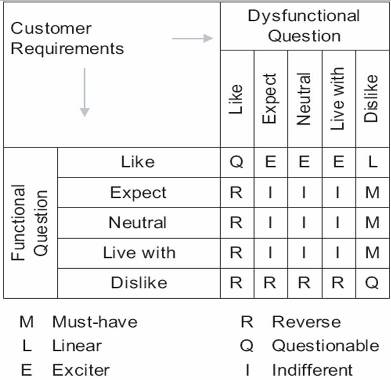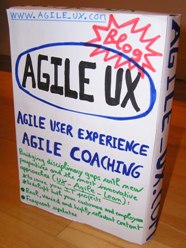The KANO model… so good for User Experience
Posted by jc-Qualitystreet on 2009/05/06
And a tool so valuable :
-
To understand user’s needs
-
To benchmark services
-
To identify usages
-
To prioritize your product backlog and your development
-
To drive your vision and your strategy
-
Or just to know your product.
The Kano model has almost 25 years … but you can still easily apply it to your own Projects (IT or not).
The strengths of the model : simplicity, and the user feedback (questionnaire).
Thus, the Kano model is both a precious User Centered Design tool and a precious decision-making aid tool.
The Kano model seeks to connect requirements (response to needs, product attributes) and customer satisfaction, and classifies 3 types of requirements, that will influence the final customer satisfaction. Very useful and very efficient.
Must Have ( « Basic needs »)
These basic requirements are not always expressed but they are obvious to the customer and must be met. If you don’t do it, « you’re dead ! »
These requirements are not a source of satisfaction but can cause major disappointment. They’re not the priority in term of development but must be there the D day.
E.g. brakes of a car; a bed in a hotel room …
Performance needs (« Linear »)
The need is expressed and customer satisfaction is proportional to the level of performance (and quality) of what is implemented. It is a strong source of customer satisfaction and a priority for Development.
It must be shown as soon as possible to the Users.
User feedback on these functions is crucial.
Delighters ( « exciters « )
These requirements are not necessarily expressed. Sometimes they’re unconscious.
This is the happy surprise that can make a difference, and an important source of satisfaction. If not there, no dissatisfaction, no frustration: they’re not expected.
Thus in terms of development, they are usually not a priority, except if it is your product or firm strategy.
E.g. The glass of champagne when you arrive at the restaurant, the wifi on the plane or in your hotel room, the mobile touch screen…
Exciters are the keys to Innovation.
Obviously, the model is not fixed and a specific function tends to go to” “the Must have”). The mobile world is the perfect illustration.
HOW DOES THE KANO MODEL WORK ?
The model is very simple: select a representative panel of users (20 … 30), pass them a questionnaire, analyze the responses and make the right decisions.
Step 1
Survey users (mostly by questionnaires) on each function through a pair of questions (functional and dysfunctional)
Functional question : « How would you feel if the product had feature X ? »
I like it
I expect it
I’m neutral
I live with it
I dislike it
Dysfunctional question : « How would you feel if the product didn’t have feature X ? »
I like it
I expect it
I’m neutral
I live with it
I dislike it
Step 2
Analyze responses for each function and each user questioned.
You have 6 possible categories (I = Indifferent; Uncertain Q = R = Reverse, and the top 3)

Step 3
Communicate final results for each function :
-
The function x is a « Must Have »
-
The function is a need expressed « Linear »
-
The function z is a requirement attractive « Exciter »
…

